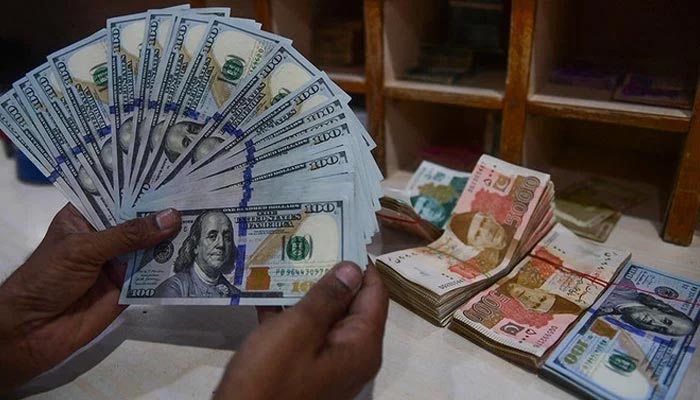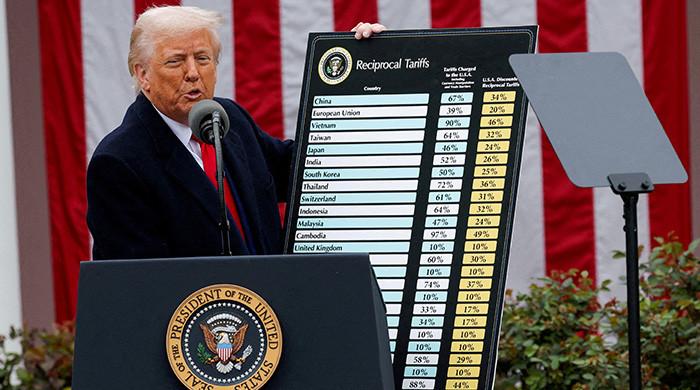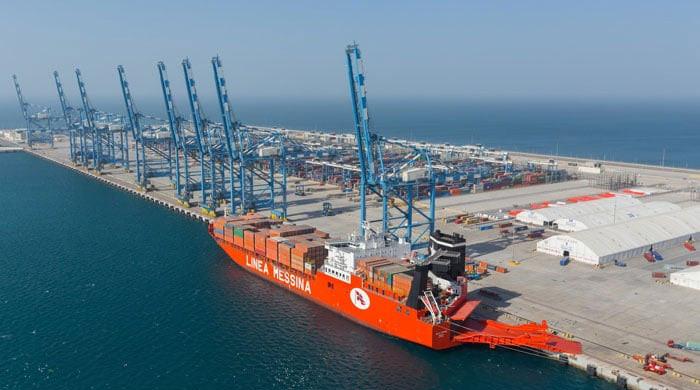Long march to become 'prolonged battleground' for rupee: analyst
Analyst believes rupee would trade range-bound in coming week as investors will be hesitant to take fresh positions due to political outlook
October 30, 2022

- Rupee would trade range-bound in coming week.
- Importer demand for dollar to remain high.
- Analyst says it would not be good situation if march is not peaceful.
KARACHI: Analysts believe that the rupee would trade range-bound in the coming week as investors appear hesitant to take fresh positions due to the current political outlook while importer demand for the dollar would likely remain high, The News reported.
The rupee lost 0.93% to 222.47 against the greenback this week, primarily due to the PTI's long march. The analysts predict that the march would become a prolonged battleground.
Moreover, the decline in the foreign exchange reserves and rating downgrade by Fitch weighed on the market sentiment. The global ratings agency Fitch cut Pakistan’s sovereign credit rating by a notch to ‘CCC+’ from ‘B-’, citing a further deterioration in the country’s external liquidity and funding conditions and a decline in foreign exchange reserves. The central bank’s foreign exchange reserves fell by $157 million to $7.439 billion in the week that ended October 21.
The Asian Development Bank’s loan disbursement of $1.5 billion did not aid the rupee's recovery.
Political developments that have emerged since the PTI started its long march towards Islamabad to seek early elections have investors feeling more nervous, according to an analyst.
“There have been some concerns that it would not be a good situation if the march is not peaceful. As a result, market players appear to be side-lined,” he said.
However, an increase in the price of Pakistani sovereign bonds brought on by the optimism that the country will meet its obligations to pay its foreign debt on schedule should boost sentiment and moderate the severe declines in the value of the rupee.
Besides, the political uncertainty, the more pressing thing was the rise in Pakistan’s credit default swaps (CDS) which rose to the highest level since the 2008 financial crisis, recording 52.80%, Tresmark said in a weekly client note.
Foreign investors were also spooked by China’s Xi Jinping assembling loyalists in his inner circle after winning the third term.
This increases the autocratic balance of power in the Asia region and preludes more extensive US-China conflict, with Pakistan in the cross hairs, it said.
“Pakistan’s external financing requirements stand at 8% of GDP, typically considered as achievable. However, these are unprecedented times as liquidity outlook gets worse with every interest rate hike that Fed does,” it said.
The meltdown in emerging markets and the surge in dollar strength would probably go from bad to worse, it noted.
Interestingly, there has been favourable progress in Pakistan’s relationship with US and China and that might be the telling factor to avert a full-blown economic crisis. Especially as the International Monetary Fund (IMF) has, as yet, been indifferent to Pakistan’s requests for softer terms, according to Tresmark.
“REER (real effective exchange rate) is estimated to be around 108 as of yesterday. This signifies that the rupee is overvalued already,” it said. “However, market forecasts that the rupee will consolidate near these levels with no major change in the next week.
They also expect the rupee to start gaining as soon as World Bank flows also start pouring in.”
Dollar appetite was still very strong though, as importers, who had their shipments on hold, seek to stockpile their materials in anticipation of future disruptions, Tresmark noted.











